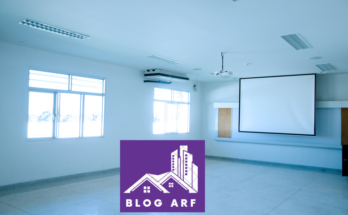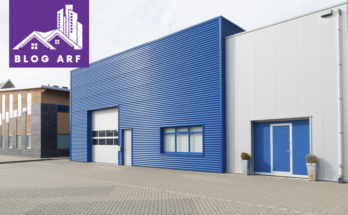Repurposing steel buildings into comfortable homes is a modern living trend that is exciting and efficient. The transformation of solid steel building turned into home settings ae groom the versatility and creativity of this durable material.
The method of converting pre-existing commercial or industrial steel buildings into residential structures provides a greener alternative to conventional construction methods.
Steel structures being converted into homes setting the versatility and creativity of this material. It provides an eco-friendly alternative to traditional building methods by repurposing existing commercial or industrial steel buildings.
Adaptability of Steel
The adaptability of steel plays a pivotal role in this transformation. It allowing for diverse architectural designs that merge functionality with beautiful application. Steel buildings contributing to a more sustainable approach in the construction landscape.
The application of steel building turned into home lies not only in their strength. It also in the unique industrial charm stemming from expose steel beams and open spaces. This trend aligns with a growing preference for unconventional yet efficient housing solutions.
Repurposing steel buildings offers cost-effectiveness by reducing material and construction expenses. It also allows for quicker assembly by utilizing existing steel frameworks.
This practice promotes environmental perception by minimizing waste and the need for new construction materials. Steel building convert into home transformations exemplify the seamless convergence of innovation and sustainability in shaping our living spaces.

Importance of Steel Building Turned into Home
Customization shows a fundamental part in tailoring the interior to specific preferences while maintaining the industrial charm. Attention to detail in the renovation process ensures a smooth integration of modern comforts into the robust steel structure. Ultimately a steel building turned into a home are represents innovation, durability and a distinctive living experience.
- Transforming steel buildings into homes is essential for eco-friendly living.
- It cuts costs, using existing structures and boosts sustainability by reducing new material needs.
- Steel’s strength ensures sturdy homes and the process is often quicker than traditional construction.
- The adaptability of steel allows for diverse, modern designs and creating unique living spaces.
- Repurposing steel aligns with green practices, minimizing waste and lowering environmental impact.
- This shift toward innovative housing signifies a practical and resource-conscious approach to our living spaces.
Important key aspects associated with steel building turned into home
Transforming a steel building into a home involves fundamental considerations. Structural integrity is supreme ensuring the adaptability of the steel framework for residential needs. Insulation becomes dynamic regulating temperature and energy efficiency.
Creative space utilization is a significant of maximizing the unique features of a steel building turned into a home. Assumption an open floor plan promotes versatility and a sense of spaciousness. Sustainable design choices contribute to eco-friendly living within the steel-built abode.
Structural Integrity:
Ensuring the steel building’s robust structure is foundational for a safe and durable home transformation.
Versatile Design Potential:
The adaptability of steel allows for diverse architectural styles, fostering creativity in home design and customization.
Energy Efficiency in Steel Building Turned into Home
Steel buildings offer excellent insulation properties, enhancing energy efficiency and reducing long-term utility costs.
Cost-Effective Construction:
Streamlined assembly and reduced labor contribute to a cost-effective process, making steel an economical choice for home conversion.
Durability and Resilience in Steel Building Turned into Home
Steel’s inherent strength provides resilience against natural elements, ensuring a home with longevity and minimal maintenance.
Open Interior Spaces:
The flexibility of steel framing allows for open floor plans, creating spacious and airy interiors tailored to modern living preferences.
Environmental Sustainability:
Steel’s recyclability aligns with eco-friendly practices, promoting sustainability and reducing the environmental impact of home construction.
Rapid Construction Timeline in Steel Building Turned into Home
The efficiency of steel assembly translates to a shorter construction timeline, allowing occupants to move into their new homes sooner.

Fire Resistance in Steel Building Turned into Home
Steel’s resistance to fire enhances safety, offering homeowners peace of mind and an added layer of protection.
Adaptability to Modern Technologies:
Steel structures easily integrate with smart home technologies, facilitating the incorporation of innovative features for modern living.
Advantages of Steel Building Turned into Home
Steel buildings transformed into homes offer numerous benefits. First and prime their robust construction ensures durability and providing long-lasting shelter against various elements.
Additionally, the adaptability of Steel Building Turned into Home allows for spacious open floor plans and innovative architectural designs, fostering a modern and stylish living environment. These homes often boast energy efficiency, excellent insulation, reducing heating and cooling expenses.
Lastly, repurposing steel structures contributes to sustainability by recycling existing materials making it an eco-friendly choice for housing solutions.
Cost-Efficiency:
- Minimizes expenses by reusing existing structures.
- Reduces the need for new construction materials.
Structural Strength:
- Provides a durable foundation for long-lasting homes.
- Ensures resilience and stability.
Quick Construction:
- Accelerates timelines using pre-existing steel frameworks.
- Offers a faster alternative to traditional methods.
Environmental Sustainability:
- Minimizes material consumption, contributing to sustainable practices.
- Lowers the environmental impact associated with new construction.
Architectural Adaptability:
- Allows for diverse and unique design possibilities.
- Provides flexibility for modern and innovative living spaces.
Industrial Aesthetics in Steel Building Turned into Home
- Adds a distinctive charm with exposed steel beams and open spaces.
- Creates a modern and industrial aesthetic in transformed homes.
Resource Conservation:
- Contributes to sustainable practices by reusing existing resources.
- Minimizes the need for demolishing and discarding materials.
Customization Opportunities:
- Enables homeowners to personalize layouts and interiors.
- Offers flexibility in design to suit individual preferences and needs.
Disadvantages of Steel Building Turned into Home
Transforming steel buildings into homes presents challenges. One drawback is the limited insulation capability of steel leading to potential temperature extremes. Steel structures are inclined to decay and demanding regular maintenance to prevent structural fall.
Additionally, the industrial appearance of steel may not align with traditional residential logic and limiting the architectural application. The construction process itself can be noisy, troublesome and impacting the immediate surroundings.
Furthermore, steel building turned into home may be lying to condensation issues. It posing risks to the interior environment and inhabitant’s health.
Insulation Challenges:
- Steel structures may require additional insulation for temperature control.
- Inadequate insulation can lead to discomfort in extreme weather.

Regulatory Compliance:
- Adherence to specific building codes and regulations may be necessary.
- Compliance can add complexity to the conversion process.
Perceived Industrial Look:
- Overcoming the perception of steel buildings as cold or industrial.
- Balancing the industrial aesthetics with desired residential warmth.
Limited Customization:
- Constraints on customization compared to traditional home construction.
- Design flexibility may be limited by the existing steel structure.
Potential Temperature Extremes:
- Without proper insulation, steel homes may experience temperature extremes.
- Managing thermal comfort becomes crucial in regions with harsh climates.
Limited Availability:
- Not all steel buildings may be suitable for residential conversion.
- Availability and suitability of structures can be a limiting factor.
Structural Modifications:
- Some buildings may require modifications to meet residential standards.
- Adaptations may be needed for utilities, plumbing, and other residential features.
Perception Challenges:
- Overcoming traditional perceptions of steel buildings as unsuitable for homes.
- Educating potential homeowners and communities about the benefits of steel conversions.
Bottom Lines of Steel Building Turned into Home
The transformation of steel building turned into homes emerges as a practical and sustainable solution in modern construction. This innovative approach driven by cost-efficiency and environmental awareness. It influences, strength, adaptability of steel to create strong and modern living spaces.
The industrial charm of exposed steel beams and open spaces adds a unique visual character to these homes and challenging traditional perceptions. While insulation challenges and regulatory considerations may arise.
The overall advantages including quick construction and resource conservation and highlight the feasibility of this approach. As we witness the shift toward repurposing existing structures, the steel building conversions, underscore a sweet blend of practicality, durability and eco-friendly living.
Frequently Asked Questions of Steel Building Turned into Home
Why repurpose steel buildings into homes?
Repurposing is cost-effective, using existing structures and reducing new material needs.
How does steel contribute to home durability?
Steel’s inherent strength ensures a resilient and sturdy foundation for long-lasting homes.
Are there challenges with insulation in steel homes?
Yes, additional insulation may be required to address temperature control challenges.
What about customization in steel-building homes?
While customization is possible, there are some constraints compared to traditional construction.
Why consider steel for an eco-friendly home?
Repurposing steel minimizes material consumption, aligning with sustainable building practices.





